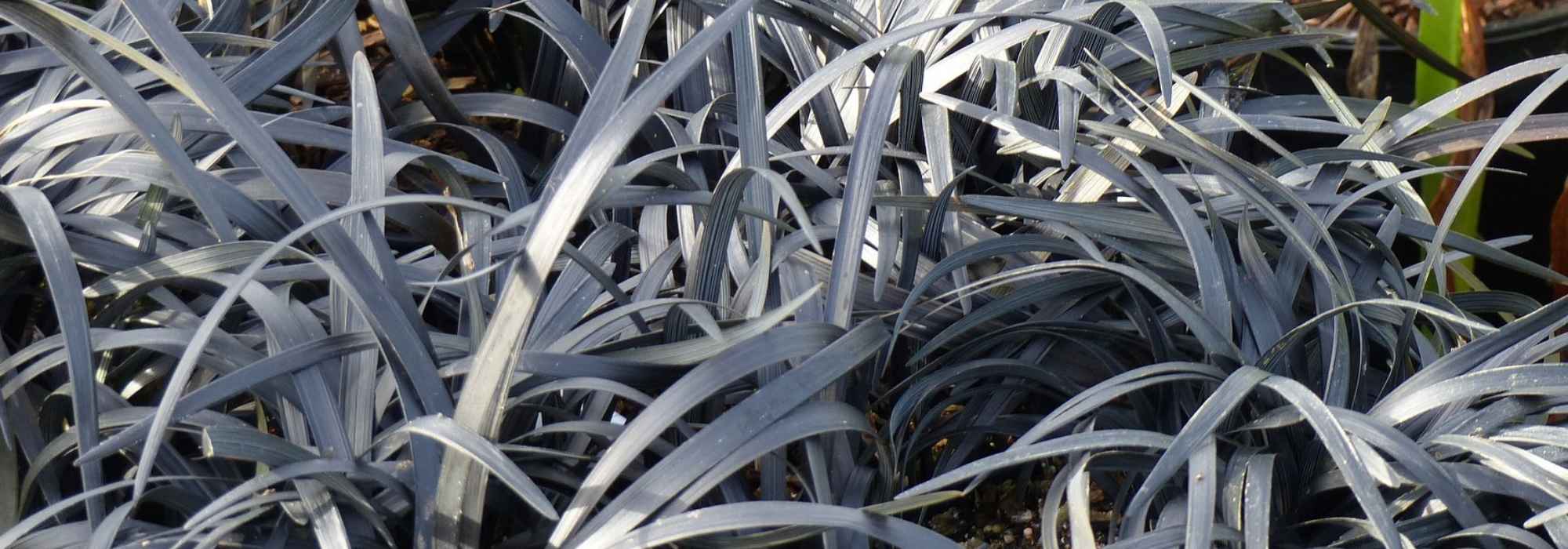
Ophiopogon, snake's beard: planting and care
Contents
Ophiopogon in a nutshell
- Ophiopogon is an elegant groundcover, evergreen in mild climate, ideal for shaded areas of garden, even beneath trees
- It grows in small, architectural clumps, solid-coloured or variegated
- Its green or black foliage gives it the appearance of a low grass
- It prefers fertile, moist but well-drained soils
- Plant in woodland, rockery, cool, moist border or in pots, in dappled sun
A word from our expert
Ophiopogon or “snake’s beard” is a pretty perennial with a grass-like appearance, but it is not one!
It slowly forms a magnificent, original evergreen groundcover in mild-winter climates, in shaded parts of garden, even under trees.
Its very graphic, strap-like foliage, brightened by pretty little bell-shaped flowers in pastel tones in summer, adds a refined, elegant touch to all gardens, from the most natural to the most contemporary.
Its tufts of graceful, linear leaves display striking solid colours, ranging from l’yellow-green Ophiopogon to l‘Ophiopogon planiscapus black ‘Nigrescens’ (syn. ‘Niger’ or ‘Black Dragon’), including the variegated tones of some Ophiopogon japonicus or “Japanese lilyturf” or of Ophiopogon jaburan.
Hardy and fuss-free, plant in well-drained, humus-bearing, slightly acidic soil.
Graphic, exotic and very colourful, it grows easily both in pots and in open ground, at edges of beds, in a shaded rockery.
Description and botany
Botanical data
- Latin name Ophiopogon
- Family Liliaceae
- Common name Ophiopogon, Turquoise grass, Japanese lily-of-the-valley, Snake beard
- Flowering June to September
- Height 0.10 to 0.45 m
- Exposure sun, shade, partial shade
- Soil type all, fresh, well-drained
- Hardiness -15°C
Ophiopogon is a perennial herbaceous plant of family Liliaceae, like lily-of-the-valley, native to shaded thickets and woodlands of China and Japan.
The genus, often confused with Liriope, includes around fifty rootstock-forming and stoloniferous species, the most common in gardens being Ophiopogon planiscapus also called “Snake beard” or “dragon beard” and its cultivars such as ‘Nigrescens’ with glossy black foliage, Ophiopogon japonicus, nicknamed “Japanese lily-of-the-valley”, and Ophiopogon jaburan with more arched leaves.
Of rather slow growth but long-lived, it gradually spreads via its fleshy rootstocks or stolons to form small, low, dense tufts, either spreading or more upright of 0.10 to 0.45 m in height, depending on species. In some cultivars, habit can be decidedly turf-like, as with Ophiopogon japonicus ‘Minor’ which will not exceed 10 cm in height.
This gramineous plant forms an evergreen groundcover in mild winters, with attractive strap-like or variegated foliage, reminiscent in fineness and narrowness of grass or a “snake beard”!
The fine linear, ribbon-like and leathery leaves, 5 to 60 cm long with a strongly marked central vein, are more or less arched and take on distinctive colours.
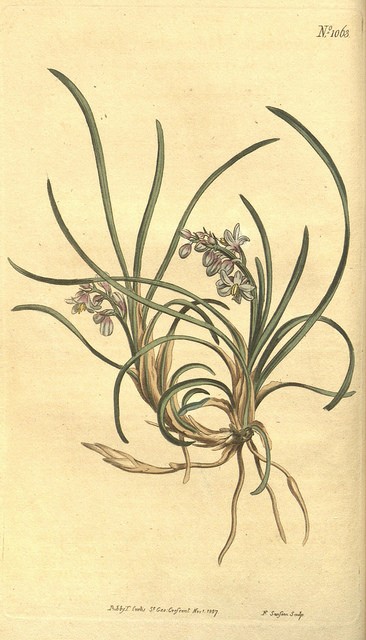
Ophiopogon japonicus – botanical illustration
From pale green to very glossy dark green, purplish black in ‘Hosoba Kokuryu’ or almost black in Ophiopogon planiscapus ‘Nigrescens’, leaves may be variegated or streaked with cream-white or gold, almost masking the green depending on variety.
In early summer, from this very graphic tuft emerge discreet inflorescences of small bell-shaped flowers similar to lily-of-the-valley, white, pinkish-white or tinged lilac to purple. Grouped in small clusters 4 to 15 cm long, on leafless stems, the flowers measure 0.5 to 7 mm in diameter, are composed of 6 campanulate petals and contrast beautifully with the foliage.
They are followed by very pretty (but toxic!) fleshy fruits in the form of berries, round to ellipsoid that persist for some time. Pea-sized, they measure 0.5 to 5 mm in diameter. Shiny, they vary by species through all shades of blue, from bluish-black to bright blue and even turquoise (‘Minor’), which earned the plant its nickname “turquoise grass”.
Hardy (-10, -15°C), Ophiopogon can be grown in many regions. It tolerates both non-scorching sun and deep shade at the foot of trees, and thrives in ordinary, fertile and slightly acidic, fresh and well-drained soil.
Used alone or planted in groups, it lends an exotic charm to modern gardens as well as more natural spaces and creates a striking effect of colour and movement.
An excellent plant for partial shade that will fully play its role as groundcover in a shade garden, at the edge of a bed of shade bushes, in a cool understorey, in rock garden and even in containers.
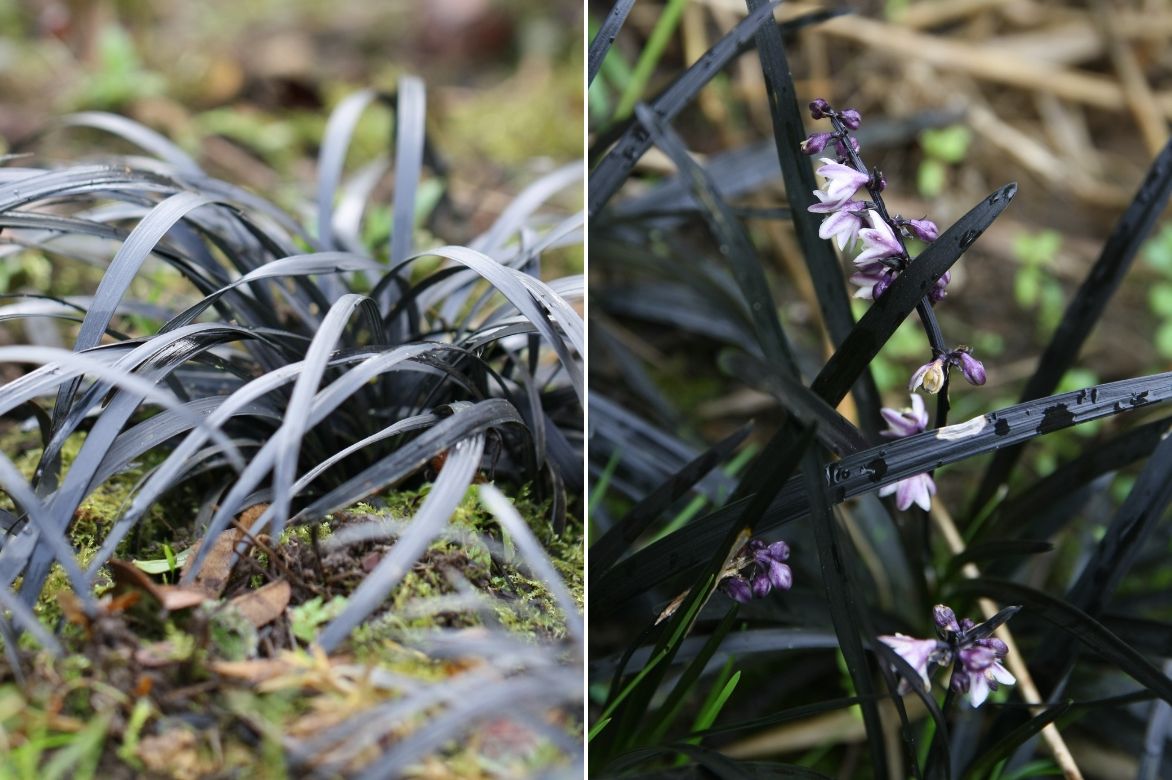
Ophiopogon planiscarpus ‘Nigrescens’ : superb black foliage and small bell-shaped flowers
Species and main varieties
Around fifty Ophiopogon species exist, most widespread in our gardens being Ophiopogon planiscapus and Ophiopogon japonicus and some must-have cultivars offering a lovely range of solid colours or sumptuous variegated shades or subtly cream-striped.
Most popular
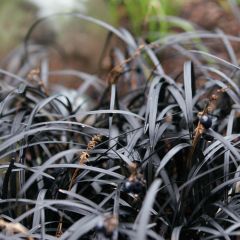
Black Ophiopogon - Ophiopogon planiscapus Nigrescens
- Flowering time August, September
- Height at maturity 25 cm
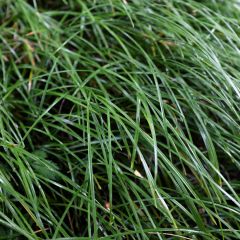
Ophiopogon planiscapus
- Flowering time August
- Height at maturity 20 cm
Our favourites
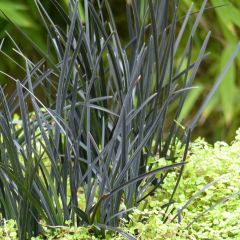
Ophiopogon planiscapus Hosoba Kokuryu
- Flowering time August
- Height at maturity 20 cm
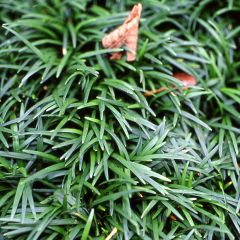
Ophiopogon japonicus
- Flowering time August, September
- Height at maturity 10 cm
Discover other Ophiopogon
View all →Available in 2 sizes
Available in 2 sizes
Available in 1 sizes
Available in 2 sizes
Available in 1 sizes
Available in 1 sizes
Available in 3 sizes
Available in 2 sizes
Available in 1 sizes
Available in 1 sizes
Planting
Where to plant Ophiopogon?
Easy to cultivate, with reasonable hardiness (-10 to -15°C) though foliage may be damaged by severe cold, Ophiopogon will be happiest in regions with mild winters. Once established, it also shows good drought resistance.
It is a perennial preferring shade or partial shade, but copes with almost any exposure, even sunny sites, provided soil remains cool.
It will grow faster in preferably non-calcareous, slightly acidic, humus-bearing, well-drained soil, especially in winter since winter waterlogging is fatal. It tolerates soil dried out by tree roots and even clay soil provided it is draining.
It is the original groundcover for shaded areas of the garden, bringing a lot of lightness and contrast.
Planted alone or in groups combining several varieties with varied colours, it brings roundness, colour and a touch of exoticism to even the most modest setting.
While it fully plays its role as groundcover in a shade garden, in a shaded rockery, in paving joints or in a shaded border, it also establishes well in a bed of heather soil in humus-bearing, cool soil as much as in a cool woodland understorey at tree bases where nothing else will grow.
Miniature species will be perfect in pots.
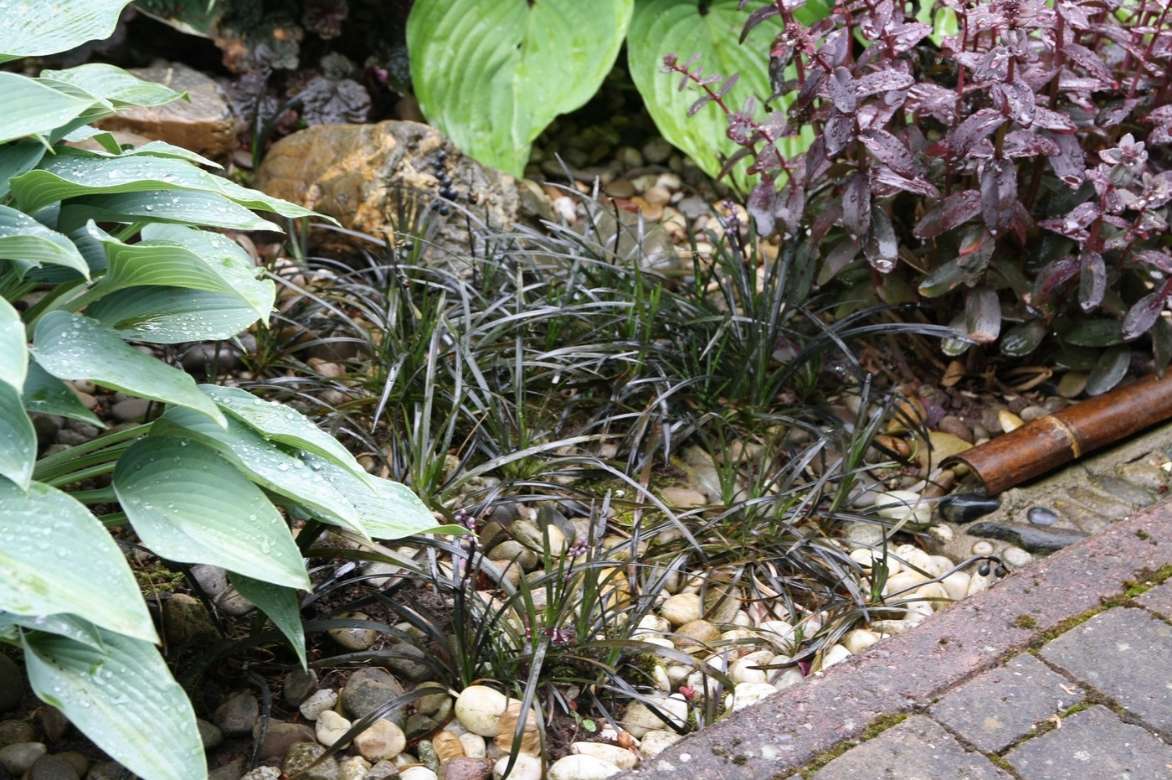
When to plant Ophiopogon?
Plant Ophiopogon in garden in spring, April to May in cold climate once risk of frost has passed, or September to October elsewhere.
How to plant Ophiopogon?
In open ground
Plant Ophiopogon in scattered clumps or in masses of 7 to 9 plants per m² spaced 20 to 60 cm apart depending on size and spread at ripeness, for an attractive decorative groundcover effect year-round in mild climate.
In heavy soils, incorporate coarse sand or gravel to improve drainage.
- Clean soil well
- Dig a hole 2 to 3 times wider than root ball
- Plant in a mix of excavated soil enriched with compost
- Firm lightly
- Water generously
In a pot
Potting mix must be very free-draining to prevent moisture from stagnating at roots.
- Spread a good layer of drainage (gravel or clay pebbles) at bottom of container
- Plant in a rich mix of potting compost, loam, heather soil and one third coarse sand
- Water
- In cold regions, protect from severe frosts during bad season by bringing into a greenhouse
Care and maintenance
Once established in fertile, fresh, well-drained soil, Ophiopogon requires almost no maintenance.
In summer, water once a week during prolonged dry spells.
In a pot, keep slightly more regular watering to keep substrate slightly moist during growth, once to twice a week, allowing it to dry between waterings. In winter, keep almost dry, without letting the plant dry out.
In bad seasons, in regions with harsh winters, even though it is relatively hardy, you can protect it from severe frosts by sheltering it in a cold greenhouse.
Elsewhere in the garden, mulch around its base from autumn with a good layer of dead leaves and add leaf mould at the base.
At the very end of summer, tidy clumps by removing dry leaves to keep a neat appearance.
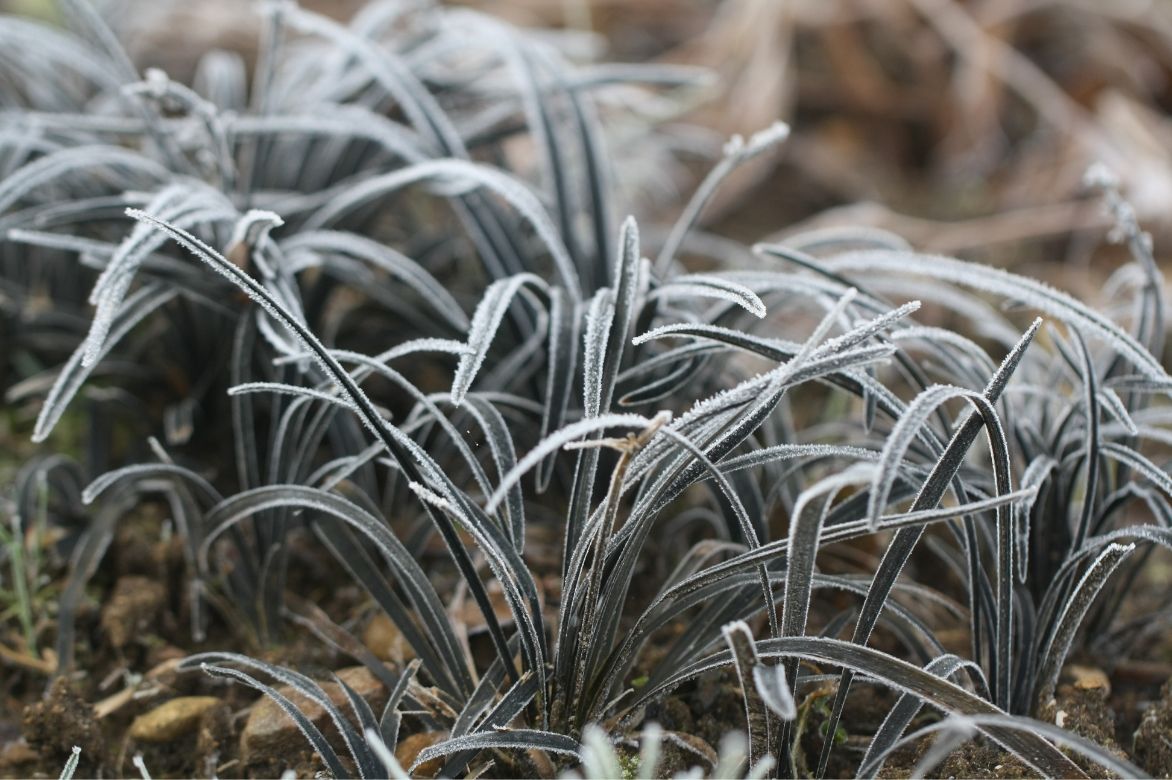
Frosted foliage of an Ophiopogon planiscarpus ‘Nigrescens’ in winter
Diseases and potential pests
Very resistant to disease, Ophiopogon is rarely endangered. In spring, its young foliage may, however, suffer attacks from slugs. Follow our tips to keep these gastropods at bay naturally or make traps!
In pots, if overwatered, foliage may yellow: in summer, make sure substrate dries out thoroughly between waterings.
Infestations of red spider mites can occur in greenhouse conditions if atmosphere is too dry: shower plants regularly as a preventive measure.
Propagation
If sowing is possible in autumn, using seeds harvested from your Ophiopogons, the quickest and least hit-or-miss method remains dividing clumps or separating stolons in spring on well-established plants.
Dividing Ophiopogon clumps
- Using the edge of a spade, lift the clump to remove rootstocks or stolons that are leafy and have as many roots as possible
- Replant the divisions taken immediately into well-prepared soil enriched with well-rotted compost or into buckets
Find more tips in our video “how to divide an ornamental grass”
Pairing Ophiopogon in the garden
With its graphic appearance, beautiful all year in mild climate, Ophiopogon lends itself to many uses and enables composition of original, very colourful scenes. Indispensable in low-maintenance gardens, where it forms evergreen carpets of leaves in all seasons.
Its graphic appearance is valuable in pared-back contemporary scenes, minimalist gardens and gravel gardens.

An example of contemporary pairing: Ophiopogon planiscapus ‘Nigrescens’, Heuchera (‘Marmalade’ for example) and Acaena
In cold regions, it adds exotic touch to terraces and balconies.
It is the little groundcover perennial essential for bringing originality to shaded, cool areas of shade gardens alongside spring bulbs and other shade-loving groundcover perennials such as hostas, ferns, pachysandra, bergenias, hardy geraniums, epimediums, vinca minor, heucheras or liriopes muscaris which are just as easy and accept same growing conditions.
At centre of a bed of heather soil bushes, its low silhouette will dress base of Acer or Japanese maple, hydrangeas and magnolias.
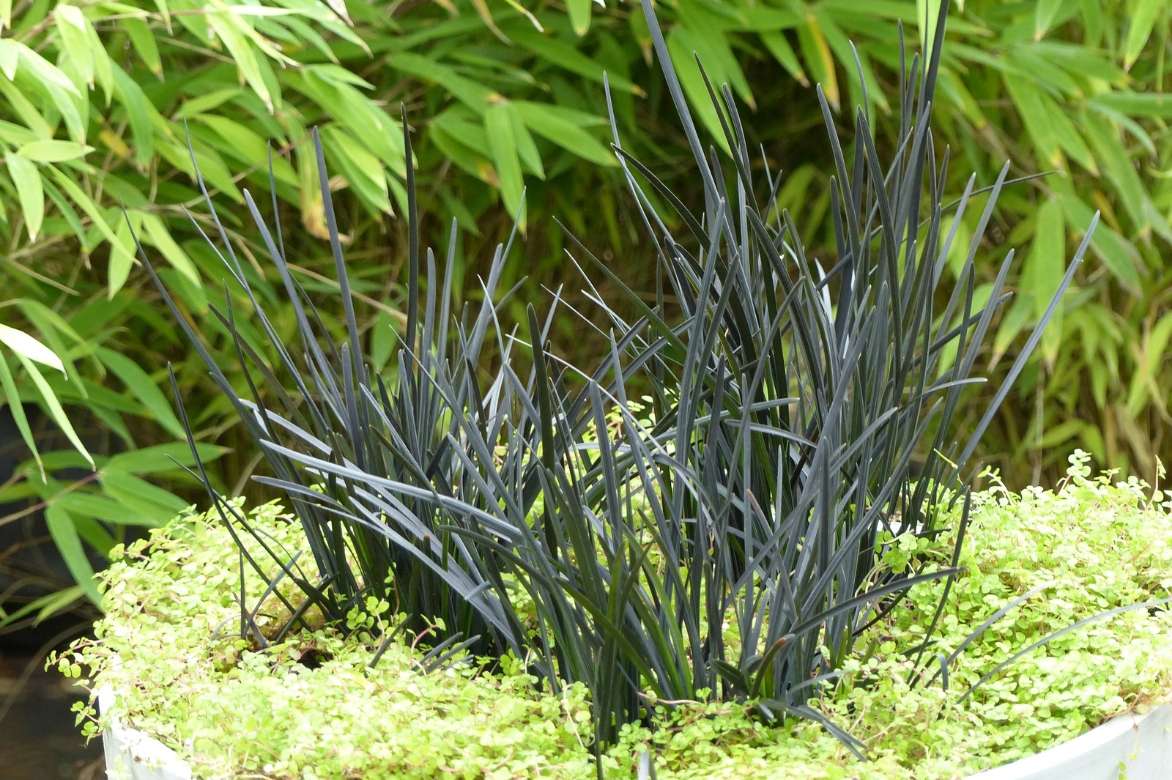
An idea for a pot pairing: foliage of Ophiopogon ‘Hosoba Kokuryu’ contrasts with golden foliage (Lysimachia nummularia ‘Aurea’, Veronica repens ‘Sunshine’, or why not (Campanula garganica ‘Dickson’s Gold)), against bamboo backdrop (Fargesia murielae ‘Bimbo’, rufa, robusta…)
It is also a wonderful little perennial for a Japanese-style garden alongside Rhododendrons, Azaleas, Bamboos and Nandina.
On edge of a mineral bed, it will keep company with grasses of modest size such as carex and Japanese grasses or with dwarf bamboos such as Sasa veitchii.
→ Discover other ideas for pairing with Ophiopogon in Jean-Christophe’s advice sheet !
Useful resources
- Discover our collection of Ophiopogons, original, easy-to-grow groundcover plants!
- What to plant under trees?
- Design a shady border: which plants to choose?
- Shade in the garden: all our ideas!
- What to plant under a tree?
- Also discover our advice sheet on slow-to-establish plants
- Learn more about perennials with decorative fruit
- Subscribe!
- Contents
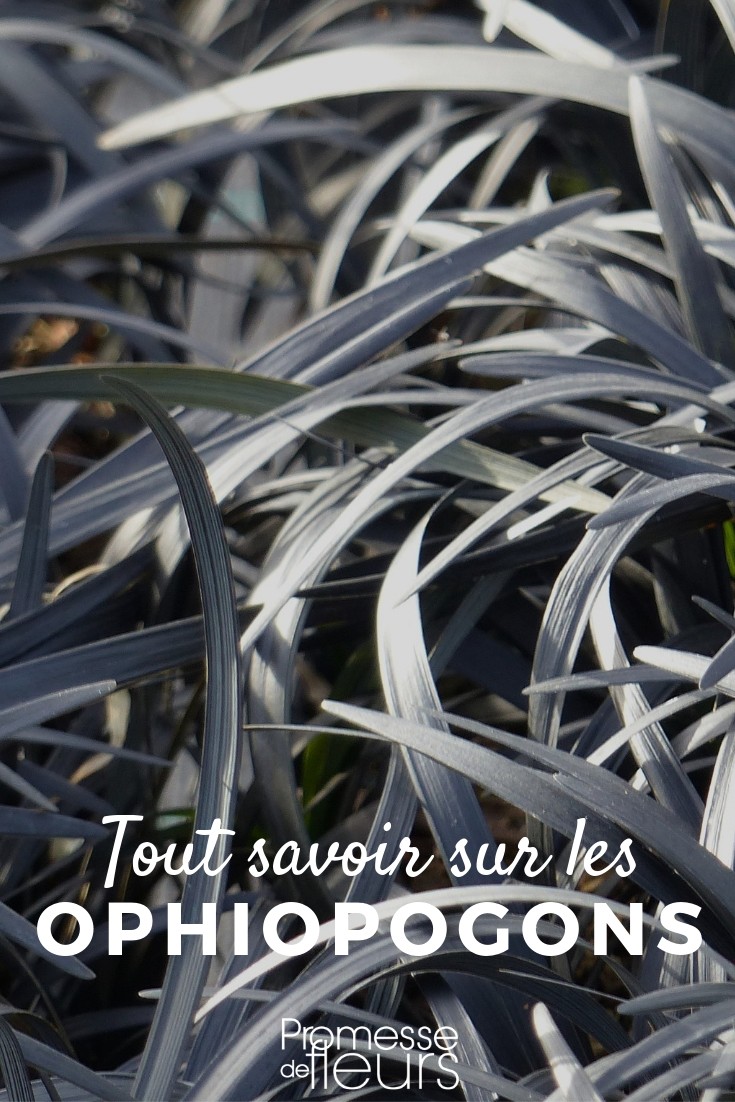
































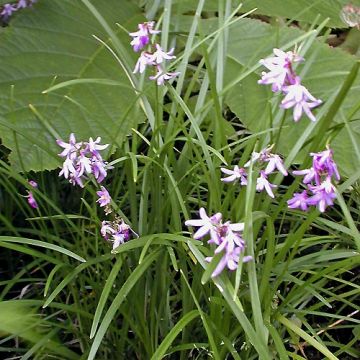


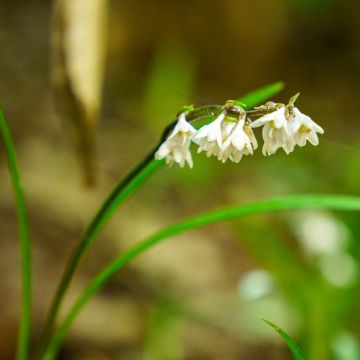
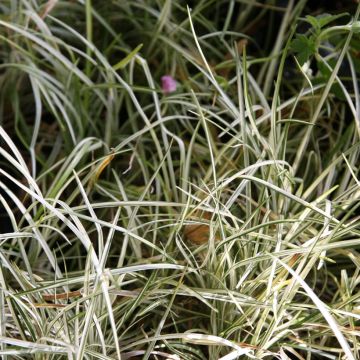
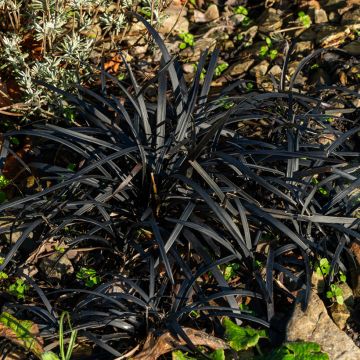
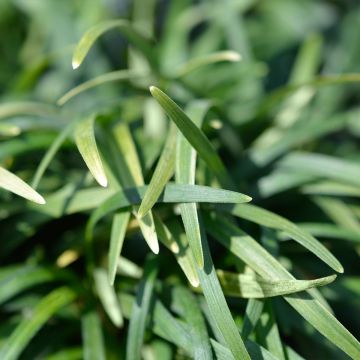

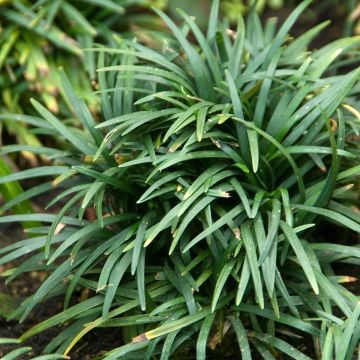
Comments